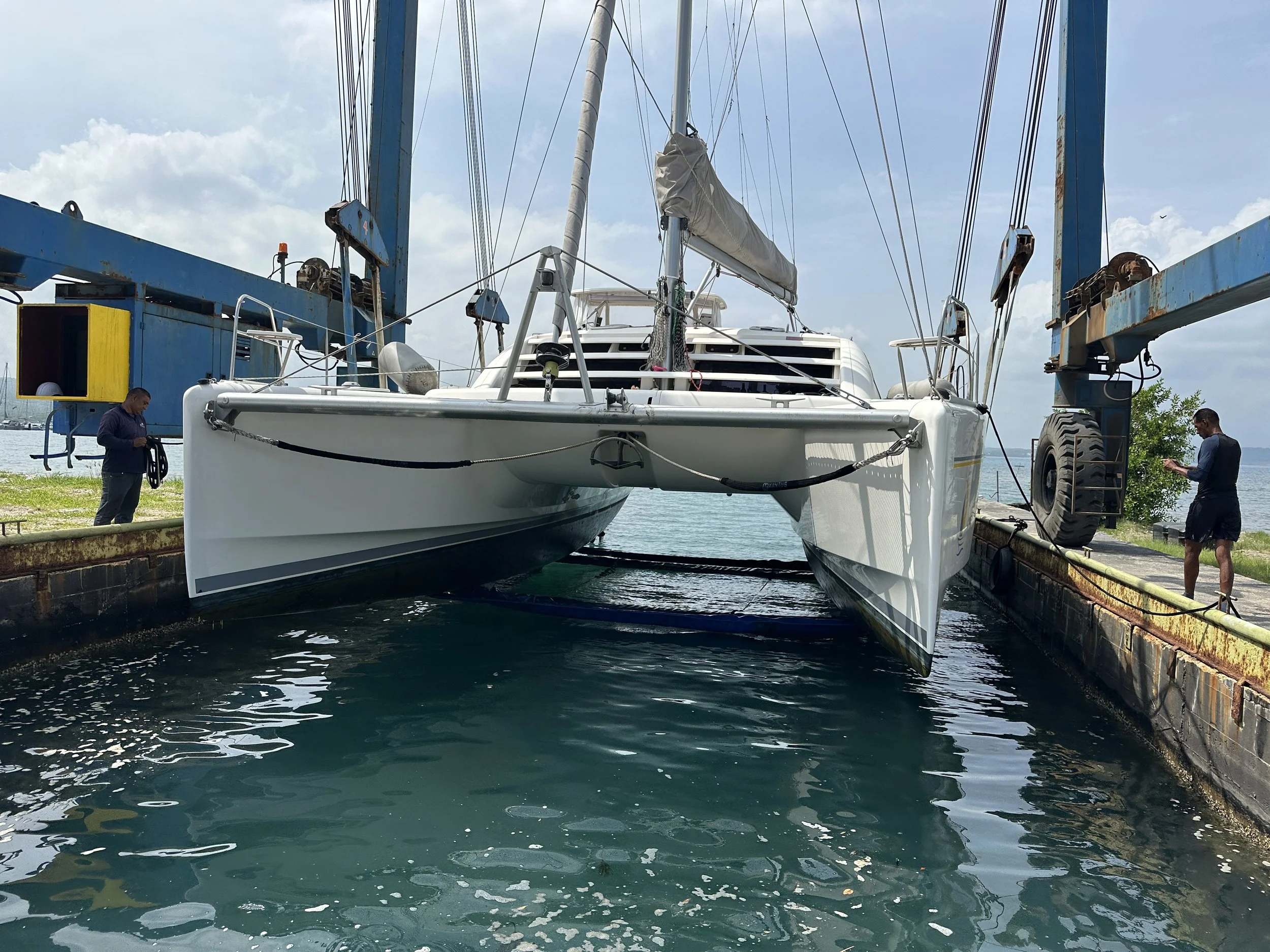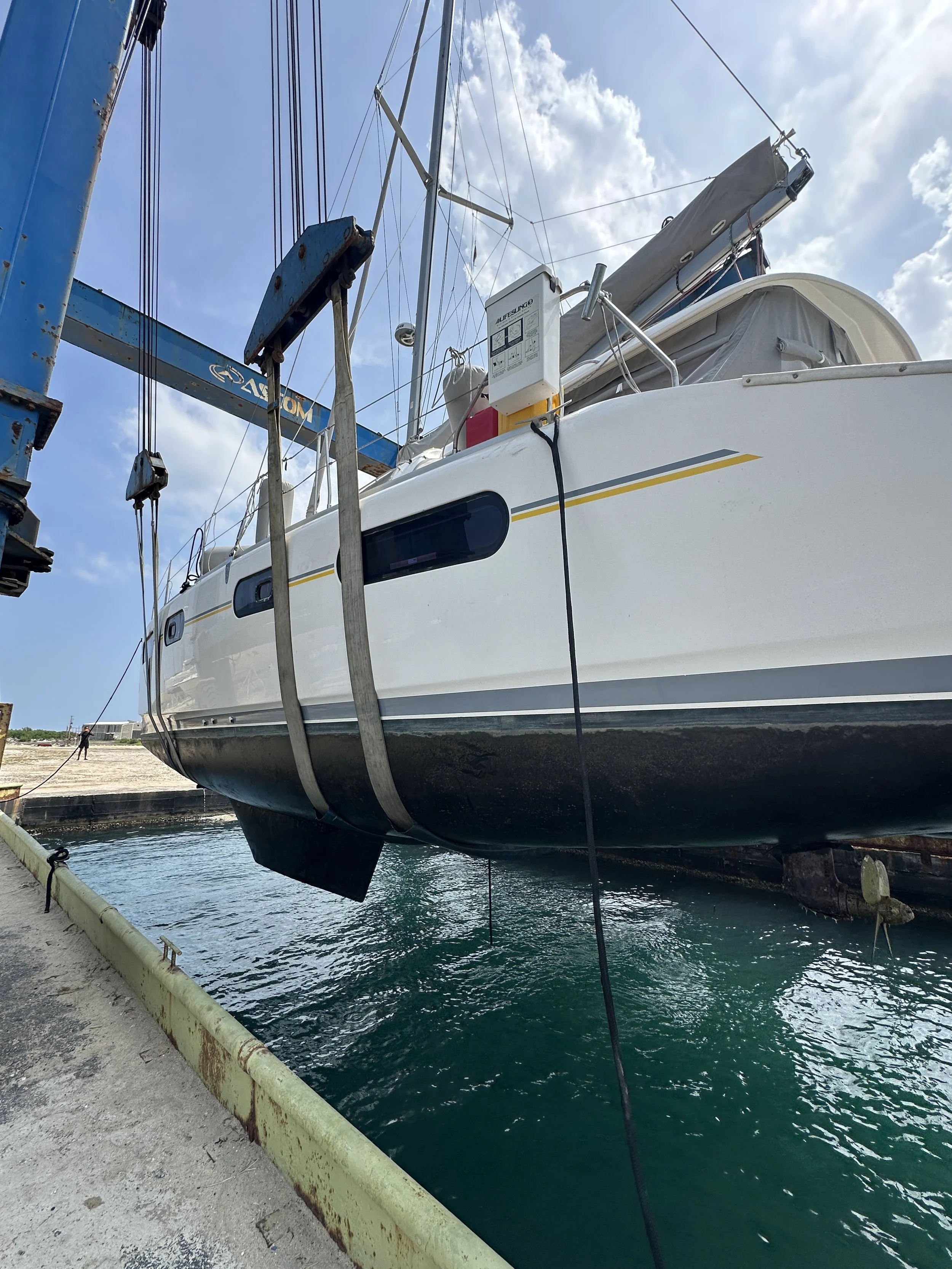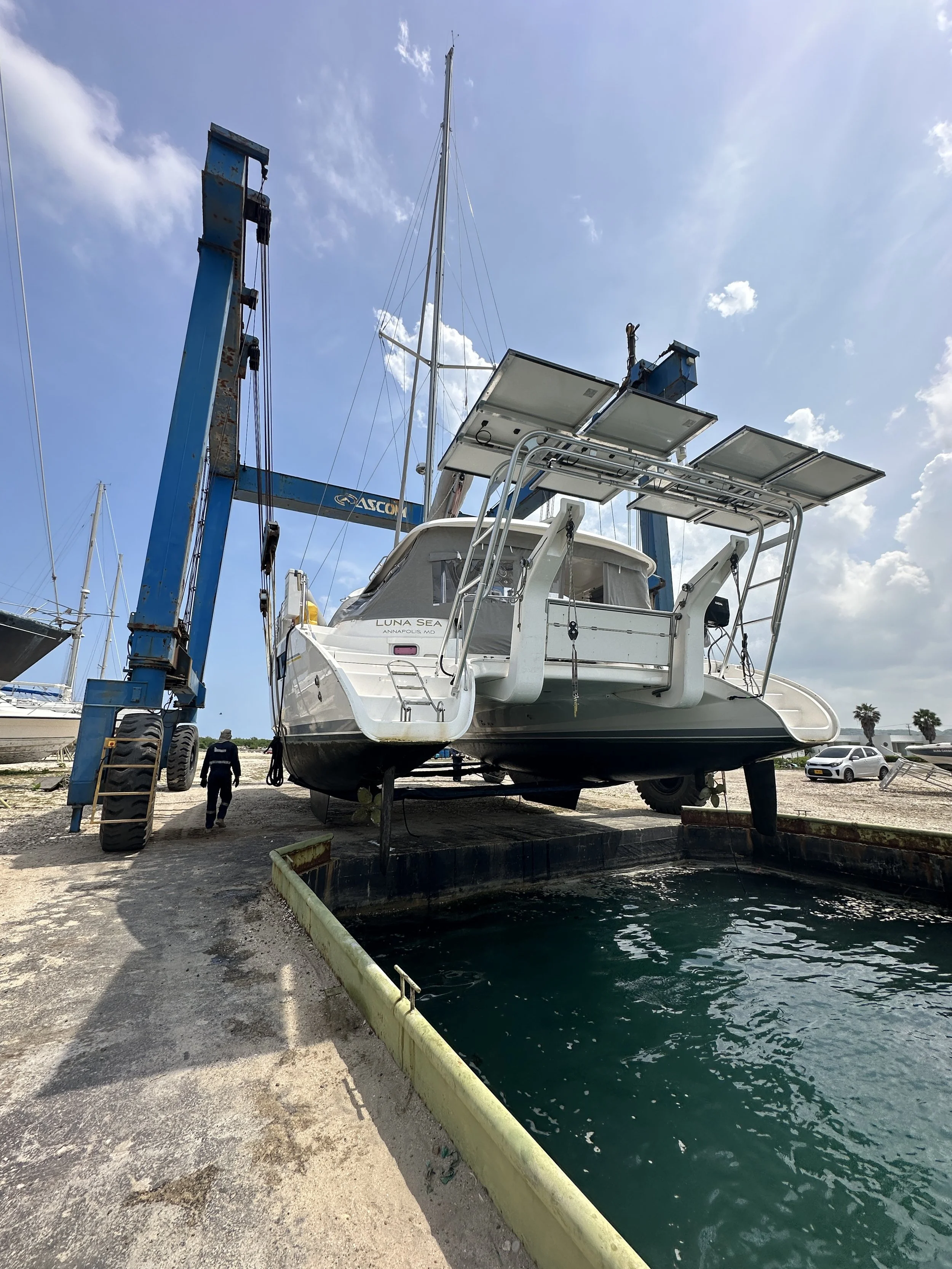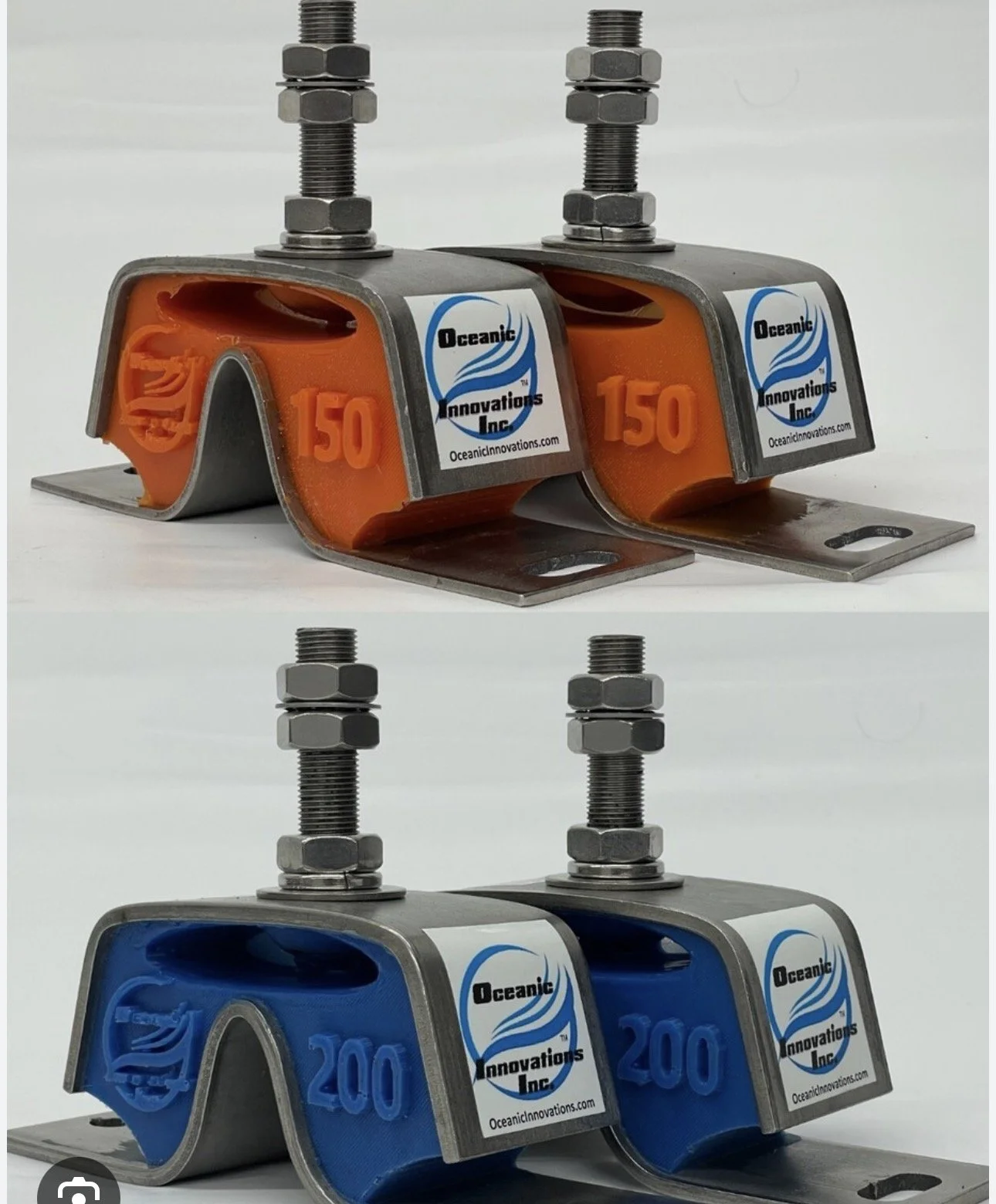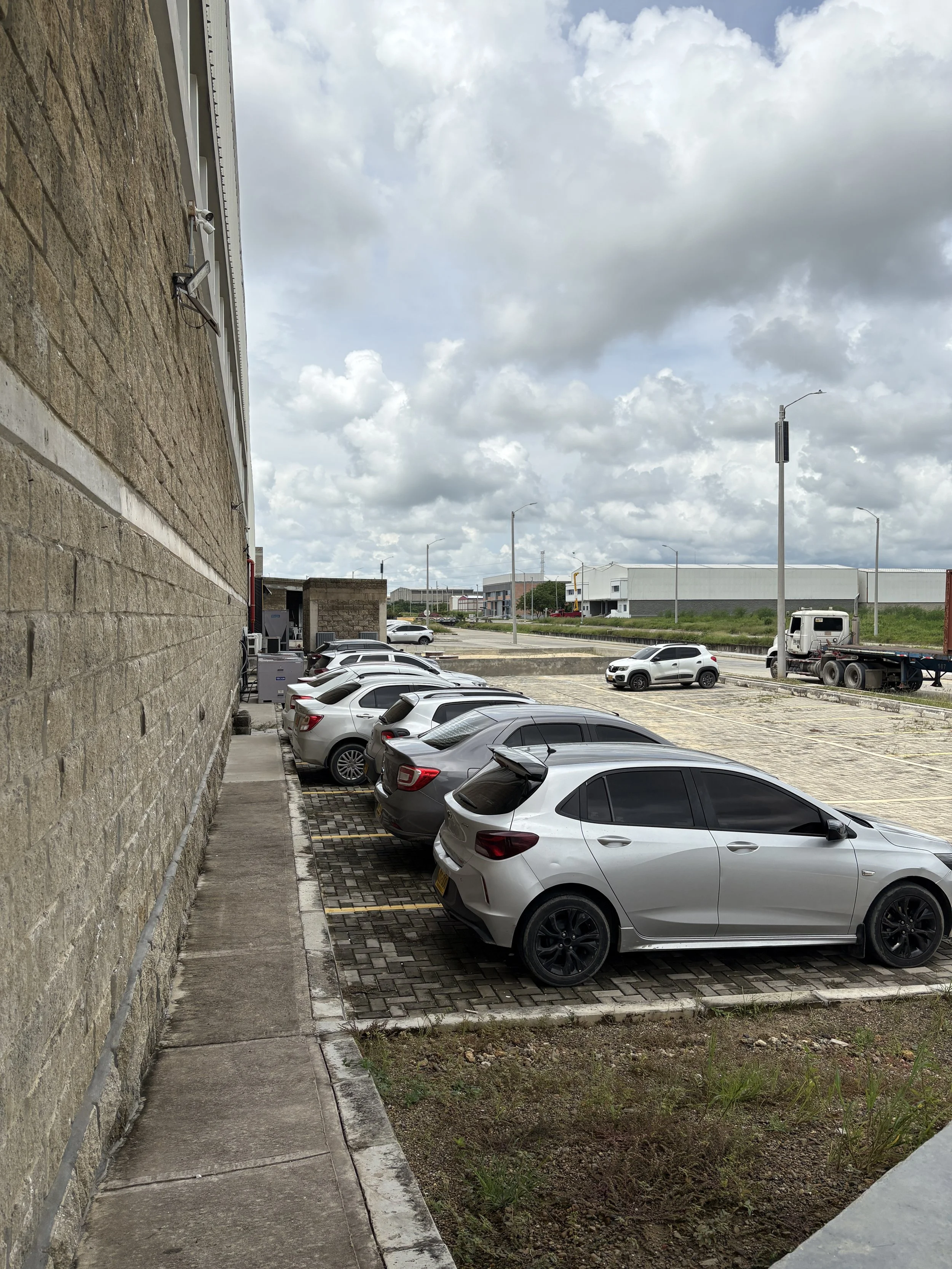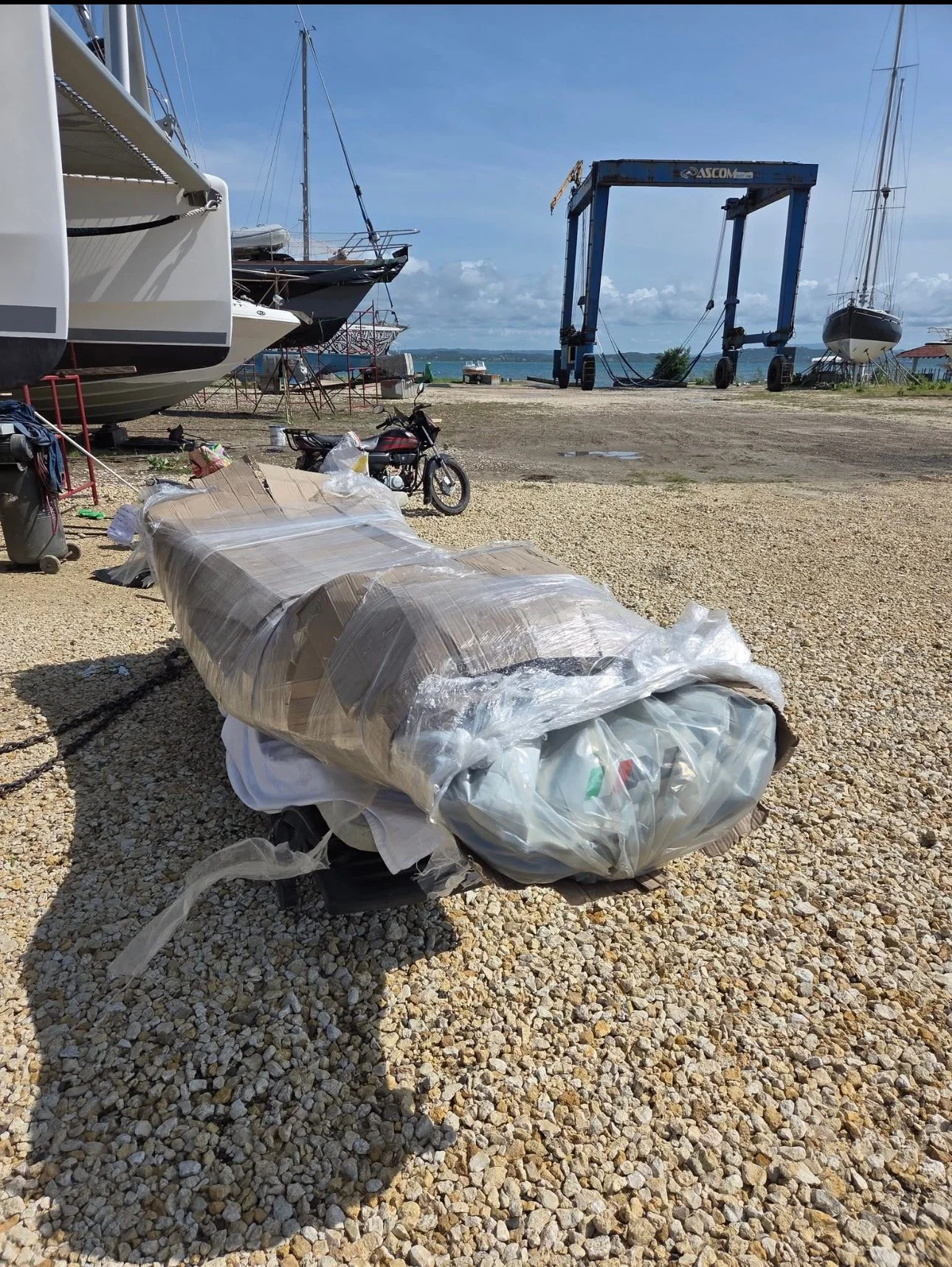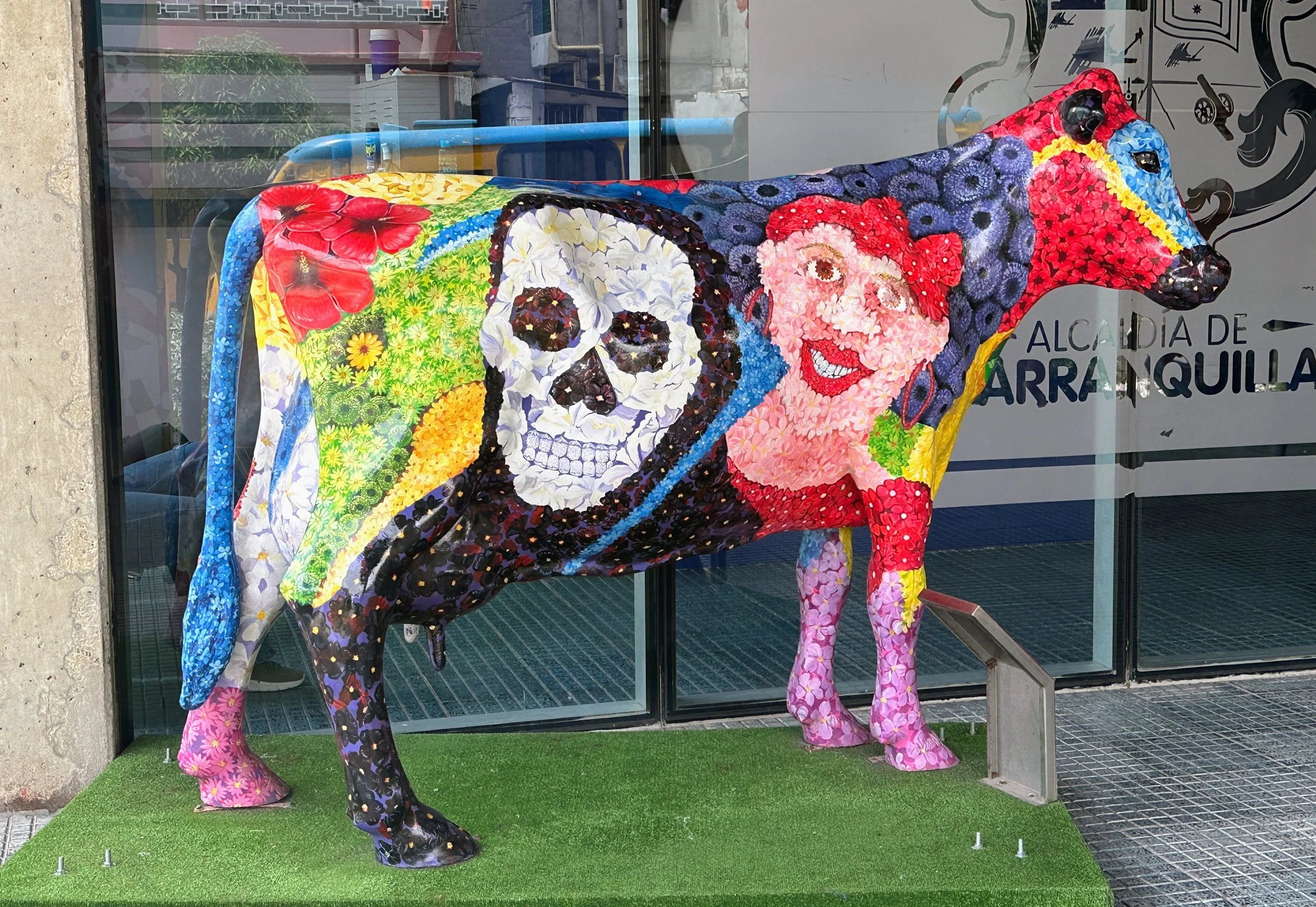Boring boat work then finally onward to Panama!
Whilst we were in Colombia, we used the downtime to start the major preparations for the boat ahead of our Pacific crossing early next year. We hauled LunaSea out of the water at Puerto Valero Marina near Barranquilla — always a nerve-wracking process given the sheer scale of lifting an 18-ton catamaran balanced on a few straps! Thankfully, the marina team did a fantastic job.
Our jobs list was relatively short, given the extensive refit we completed on LunaSea two years ago in Annapolis, but we wanted her fully ready — not just for the Pacific crossing, but also for the possibility that we might not be able to haul her out again for a couple of years depending on where our travels take us.
The work included a full overhaul and clean of both engines (one for each hull), replacing worn parts and keeping serviceable ones as spares. We also replaced the seals on all our thru-hulls — essentially holes in the bottom of the boat that allow seawater in for systems like cooling and drainage (definitely not something you want leaking!). We checked the saildrives and reinforced a few small areas of fiberglass that needed strengthening.
We also decided to replace our dinghy and outboard while in Colombia. The old one dated back to 2011, original to the boat, and since it’s effectively our “car” — our way to shore, to re-provision, and to explore — we didn’t want to risk breakdowns mid-Pacific, especially somewhere remote like French Polynesia. Coincidentally, AB Inflatables, the brand of our old dinghy, is manufactured in Colombia — just 30 miles from where we were staying! We were lucky enough to get a private tour of their factory (sadly no photos allowed) and watched the fascinating process of how a dinghy is built. A few weeks later, we took delivery of our brand-new 11-foot aluminum-bottomed dinghy and 2-stroke outboard. A pretty cool Friday “school trip” — and even better, tax-free since we were in transit through Colombia! As our time and visas were running out and the boat was ready to relaunch, we squeezed in a final visit to Cartagena (still obsessed with those door knockers!) and the Carnival Museum in Barranquilla — small but beautifully curated, with displays of Carnival Queen dresses and crowns from past years, each more intricate than the last. After checking out of Colombia at the immigration office, we finished provisioning and set off on a 36-hour motorsail south — light winds, minimal lightning risk, just how we like it.
Cartagena wanderings :)
We dropped anchor briefly near Cartagena for one last tweak from our engine mechanic, which gave us a lovely view of the city from the water. Apart from a few hitchhikers as we approached Panama, it was an uneventful passage — the best kind.
Arriving in Panama felt like entering a completely different world. After the bustle of Cartagena, the contrast couldn’t have been starker. Panama has two very distinct sides — the industrial, canal-focused cities of Panama City and Colón, and the serene island chain of the San Blas. The Guna (also spelled Kuna) are the Indigenous people of this region, living across three politically autonomous territories. Their lives are rooted in fishing, traditional wooden canoes, and a deep cultural heritage we can’t wait to learn more about.
We’re so excited to spend the next few months exploring these waters, meeting the Guna people, and soaking up this extraordinary place we now call home.






